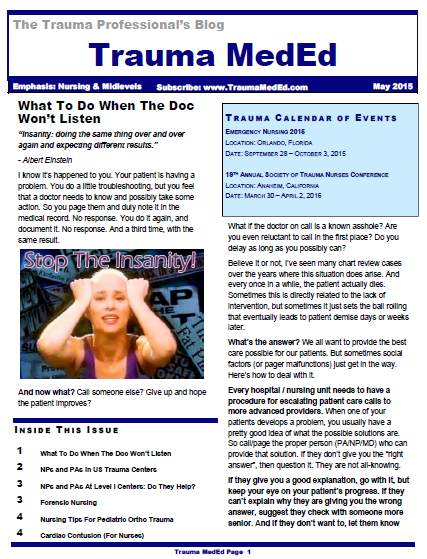Most trauma professionals recognize the value of motorcycle helmets. I’ve written many articles here on the topic (see below). There is high quality evidence that helmets decrease severity of injury in motorcycle crashes (fewer severe brain injuries, higher survival, etc). And we also know from other studies that riders are not protecting their brain at the expense of their spine and torso.
In the 1970s, 47 of US states had enacted universal helmet laws. It wasn’t long after that the federal government lost its authority to penalize noncompliance. So you know what happened. Special interest groups began to weaken and/or repeal these laws, one by one. Now, although some form of helmet law still exists in 47 states, they apply universally to riders in only 19. In the other 26, only young riders, inexperienced ones, or those with insufficient insurance must wear helmets. But how would law enforcement know that when they see the average motorcyclist whizzing by? Which means that the number of riders wearing them has decreased markedly.
The hard part of doing studies to look at the impact of helmets vs no helmets is placing a specific value on a life. A group at the Medical College of Wisconsin in Milwaukee designed a study to use a specific statistical method to attack this problem. They looked at the the value that one places on a marginal change in their likelihood of death. Another way to look at it is the cost of reducing the average number of deaths by one. This is the Value of Statistical Life analysis.
Here are the factoids:
- Cost and population information was obtained from a number of federal databases
- Injury information was obtained from the National Trauma Databank
- 3951 motorcycle fatalities occurred during the one year study period
- 77% died at the scene, 10% in the ED, and 13% as inpatients
- 37% of riders did not wear helmets, but accounted for 69% of deaths
- Helmet use increased survival in a crash by 50%
- Costs for hospitalization and rehab (for survivors, obviously) were $5.5 billion for nonsurvivors vs $3.3 billion for survivors
- The extra cost per fatality was about $800K
- Therefore, (re)implementing universal helmet laws stands to save $2.2 billion per year
Bottom line: Enough numbers here to make your head spin. The $2.2 billion savings, along with a value of statistical life of $2.4 billion equals $4.6 billion in calculated gains. Obviously, the science appears more exact than it really is, but the numbers are large enough to confidently state that lots of money can be saved by simply wearing helmets. The hardest part of this is the human factor. Without legislation, people won’t wear helmets. And there are enough people that haven’t had to wear them, that they will lobby to keep it that way. Catch-22. The solution: prevention, although this will most likely be after the fact, when the patient is already injured and in the hospital. Do your part!
- EAST evidence-based review on motorcycle helmets
- Myth: motorcycle helmets and spine injury
- The cost of “personal freedom”
Reference: National mandatory motorcycle helmet laws may save 2.2 billion annually: an inpatient and value of statistical life analysis. J Trauma 78(6):1182-1186, 2015.




